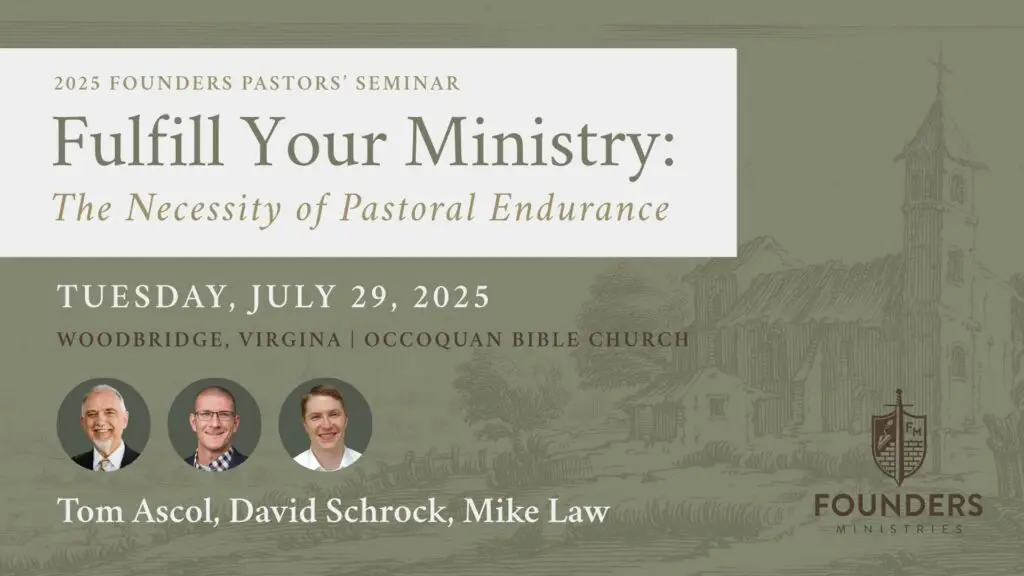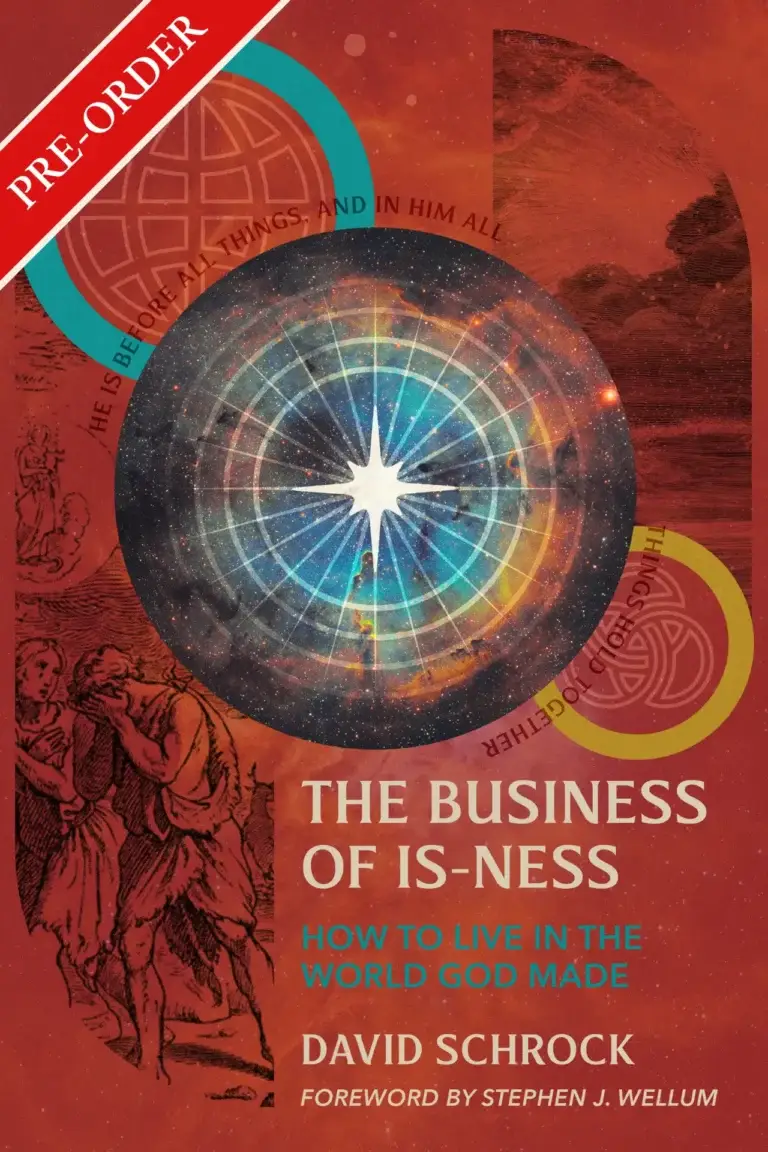Historically, Reformed Baptists are covenantal. Though they differ from their Presbyterian brothers on a few key issues, according to the 1689 London Baptist Confession of Faith, Baptists were equally committed to a robust covenantal framework of the history of redemption. In fact, every chapter of the confession is built on a covenantal matrix. Though chapter 7 is devoted entirely to the covenants, the chapters on creation, providence, the fall of man, Christ, justification, repentance, the gospel, good works, and perseverance are explained from a covenantal perspective.
For our Baptist forefathers, an alteration of the doctrine of the covenants is an alteration of the gospel of Jesus Christ. The gospel, in its broader context, includes the fulfilling of the covenant of works by the Second Adam, Jesus the Christ, that was broken by the first Adam; the Second Adam endured its curses and established its blessings for all those who are chosen by God to be represented by the Second Adam in the covenant of grace.
With this in mind, chapter 7 of the confession stresses three essential truths relating to its covenantal framework. Paragraph 1 confesses a prelapsarian covenant of works. Paragraph 2 confesses a postlapsarian covenant of grace. Paragraph 3 confesses an eternal covenant of redemption.
The Covenant of Works
Paragraph 1 confesses a prelapsarian covenant of works. Though the phrase “covenant of works” is located in 7:1 of the Westminster Confession, but is missing in 7:1 of the 1689, it is not because the 1689 denies that God’s pre-fall arrangement with Adam was a covenant of works. This is made clear in 20:1, where the 1689 calls it “the covenant of works.” Moreover, in 19:1, the 1689 explains that this prelapsarian covenant was based on works:
God gave to Adam a law of universal obedience written in his heart, and a particular precept of not eating the fruit of the tree of knowledge of good and evil; by which he bound him and all his posterity to personal, entire, exact, and perpetual obedience; promised life upon the fulfilling, and threatened death upon the breach of it.
Adam, in his state of innocence (7:3), was to merit eternal life through obedience to God’s moral law. Anything short of perfect obedience would result in death. And, as Nehemiah Coxe reminded us, this covenant did not include “the least iota of pardoning mercy.”1
The Necessity of the Covenant of Works
Moreover, the 1689 states that the covenant of works was necessary for eternal life to be promised to man. As 7:1 says: “Although reasonable creatures do owe obedience to him as their creator, yet they could never have attained the reward of life but by some voluntary condescension on God’s part, which he hath been pleased to express by way of covenant.”
This implies that the quality of life that God promised to man was of a greater value than what man possessed in his innocence and of a greater value than that which God was obligated to reward man for his obedience. Without this covenant, according to the confession, eternal life couldn’t have been offered to man.
The Perpetuity of the Covenant of Works
Of course, the confession states that the covenant of works was broken (20:1). A broken covenant, however, does not mean an abrogated covenant. Though the covenant of works was broken by Adam, the 1689 teaches that it remains binding on all of Adam’s posterity. That is, the same covenant of works that was established with Adam before the fall continues to be enforced on all of Adam’s unredeemed posterity after the fall.
First, the covenant of works continues after the fall because its curses continue to plague the human race after the fall. The confession teaches that the first Adam was the federal head of the human race and that he brought universal condemnation and death to all his descendant by his failure to keep the covenant of works (6:1, 2, 3). Because universal condemnation and original sin continue, the covenant of works continues.
Two, the covenant of works continues after the fall because its legal demands continue to bind the human race after the fall. The terms of the covenant of works consisted of more than just refraining from eating from the forbidden tree; it required complete obedience to God’s moral law that was written on Adam’s conscience (19:1). And though it is impossible for Adam’s descendants to eat of the forbidden tree, they are able to violate God’s moral law that is equally written in their conscience. As the confession states: “The same law that was first written in the heart of man continued to be a perfect rule of righteousness after the fall” (19:1).
Three, the covenant of works continues after the fall because man’s moral inability does not nullify man’s moral culpability. Though the confession clearly teaches that fallen man is unable to keep the demands of the covenant of works: “The covenant of works being broken by sin, and made unprofitable unto life” (20:1), it states that the terms and promises/threats of the covenant of works continue to all of Adam’s children. For instance, according to the confession, Israel was reminded of the terms of the prelapsarian covenant of works in the postlapsarian covenant that was established with them at Mt Sinai. The “same law” that was written on Adam’s heart, according to the confession, was “delivered by God upon Mount Sinai” (19:2). So even though fallen man cannot obey, they are still required by God to obey.
Four, the covenant of works continues after the fall, as 19:6 strongly implies, because the only way to be free from the demands of the law “as a covenant of works” is to be justified by Christ and brought into the covenant of grace by faith. Unlike our Presbyterian friends, Baptists do not believe in any dual covenantal membership. According to the 1689, Adam’s descendants are either under the covenant of works or they are under the covenant of grace. It is one or the other: for it is impossible for those represented by the first Adam (i.e., the natural seed of believers) to be members of the covenant of grace. Moreover, just as it is impossible for those represented by the first Adam to keep the covenant of works, it is impossible for those represented by the second Adam to break the covenant of grace. This is a major Baptist distinctive that is confirmed by the 1689.
In summary, the covenant of works consisted of God’s promising Adam and his children eternal life for perfect obedience, and threatening eternal death for a single act of disobedience. Though Adam broke the covenant of works and brought death and condemnation on all his seed, the demands and curses of the covenant of works continue to be enforced on all of Adam’s seed who are outside of faith in Jesus Christ.
The Covenant of Grace
Because the covenant of works leaves sinners hopeless, sinners need the gospel. Because of this, paragraph 2 introduces the gospel by introducing the covenant of grace: “Moreover, man having brought himself under the curse of the law by his fall, it pleased the Lord to make a covenant of grace, wherein he freely offereth unto sinners life and salvation by Jesus Christ” (7:2). The union between the covenant of grace and the gospel is reaffirmed in chapter 20: “The covenant of works being broken by sin, and made unprofitable unto life, God was pleased to give forth the promise of Christ, the seed of the woman, as the means of calling the elect, and begetting in them faith and repentance: in this promise of the gospel” (20:1).
The Covenant of Grace is the Only Means of Salvation
Though the confession teaches the perpetuity of the covenant of works throughout the Old and New Testament dispensations, it strongly affirms that salvation in both dispensations is by grace and grace alone. The continuation of the covenant of works was not to drive sinners to the law, but to drive them to their knees. Because the law is unable to bestow eternal life to covenant breakers, God revealed the gospel immediately after the fall (20:1). Adam and all his fallen offspring were given hope of eternal life through the proclamation of the gospel, and through the proclamation of the gospel alone.
What is interesting about paragraph 2 is the absence of the main distinctive of Presbyterian covenant theology: that the Old and New Covenants are two different administrations of the same covenant of grace. The Westminster Confession states: “There are not therefore two covenants of grace, differing in substance, but one and the same, under various dispensations” (7:6). This allows for Presbyterians to incorporate unbelieving children into the covenant of grace. This phrase was removed from the 1689, and for good reason. The 1689 does not claim that the Mosaic Covenant was an administration of the covenant of grace. Rather, it simply says that the covenant of grace was innately revealed in the protoevangelium (Genesis 3:15), and then with greater clarity it was revealed throughout the progression of the Old Testament dispensation until it came to its fullest manifestation in the New Testament: “This covenant is revealed [not established] in the gospel; first of all to Adam in the promise of salvation by the seed of the woman, and afterwards by further steps, until the full discovery thereof was completed in the New Testament” (7:3).
More explicitly, the 1689 says that the covenant of grace, which was established by the blood of Jesus, was retroactive during the Old Testament dispensation: “Although the price of redemption was not actually paid by Christ until after His incarnation, yet the virtue, efficacy, and benefit thereof were communicated to the elect in all ages” (8:6). This is in agreement with Benjamin Keach who said: “All believers, who lived under the Old Testament, were saved by the covenant of grace, which Christ was to establish.”2
This implies that the covenant of grace is identical to the New Covenant. So rather than the covenant of grace being established through various administrations of the different covenants of the Old Testament (Abrahamic, Mosaic, and Davidic), it was established by Christ in the New Covenant. Therefore, Old Testament believers were saved by faith in Christ, in the same way New Testament believers are saved by faith in Christ. Or as paragraph 3 states: “It is alone by the grace of this covenant that all the posterity of fallen Adam that ever were saved did obtain life and blessed immortality” (7:3).
And, if membership in the covenant of grace is by faith in Christ alone, then only believers alone, and not their unbelieving children, are in the covenant of grace. In fact, this is one of the main distinctives of Baptist covenant theology: only believers, in any dispensation, are members of the covenant of grace. This formation of covenant theology makes the 1689 distinct from the covenant theology of the Westminster Confession of Faith.
The Covenant of Grace is the Fulfillment of the Covenant of Works
Moreover, according to the 1689, Christ established the covenant of grace by fulfilling the legal demands of the covenant of works: as the 1689 says, “[the Lord] was made under the law, and did perfectly fulfil it” (8:4). Not only did He obey the same demands of the covenant of works that we were obligated to obey, He “underwent the punishment due to us, which we should have borne and suffered, being made sin and a curse for us” (8:4).
This is why we are saved by works, but the works that save us are the imputed works of Christ that come by faith alone and grace alone. The covenant of grace is the fulfillment of the covenant of works, or it could be said that the New Covenant is a covenant of works for Christ, but a covenant of grace for believers. As Benjamin Keach stated:
As it refers to Christ…it was a conditional covenant. Christ receives all for us, wholly upon the account of His own merits. But whatsoever we receive by virtue of this covenant, it is wholly in a way of free grace and favor, through His merits, or through that redemption we have by His blood.3
In this covenantal framework we see the unity of the Scriptures and a single plan of redemption throughout the Old and New Testaments. Adam’s children are either condemned by the first Adam, or they are justified by the second Adam. They are either under the covenant of works or under the covenant of grace—and this depending on who is their federal head. Again, this separates Baptists from Presbyterians, as it does not allow for either unbelieving children or covenant breakers to be members of the covenant of grace.
The Covenant of Redemption
The last paragraph of chapter 7 explains why the history of redemption does not depict God as adjusting his plans on the fly. The covenant of grace was established by Christ enduring the penalty of the covenant of works in His death and by His meriting the reward of the covenant of works in His resurrection. Yet, all this was in accordance with God’s eternal plan that was established between the Father and Son before the foundation of the world (7:1). Or as chapter 8 explains it: “It pleased God, in His eternal purpose, to choose and ordain the Lord Jesus, his only begotten Son, according to the covenant made between them both, to be the mediator between God and man” (8:1). Thus, the history of redemption, including the prelapsarian covenant of works and the postlapsarian covenant of grace, is the outworking of the eternal covenant of redemption.
Conclusion
The covenant theology of the 1689 is brilliantly laid out. It clearly states the main distinctives of Baptist covenant theology. There is (1.) a prelapsarian covenant of works that was broken by the first Adam and condemns all unbelievers, (2.) but that was fulfilled by the second Adam who established the postlapsarian covenant of grace for only believers, (3.) and this was in accordance with the eternal covenant of redemption.
With a clear distinction between the covenant of works and the covenant of grace, and with a clear distinction between unbelievers and believers, the 1689 presents a distinct covenant theology that is thoroughly baptistic.
NOTES:
1 Nehemiah Coxe and John Owen, Covenant Theology: From Adam to Christ (Palmdale, CA: Reformed Baptist Academic Press, 2005), 49.
2 Benjamin Keach, “The Display of Glorious Grace” in The Covenant Theology of Benjamin Keach (Conway: Free Grace Press, 2017), 110.
3 Ibid., 157.






























